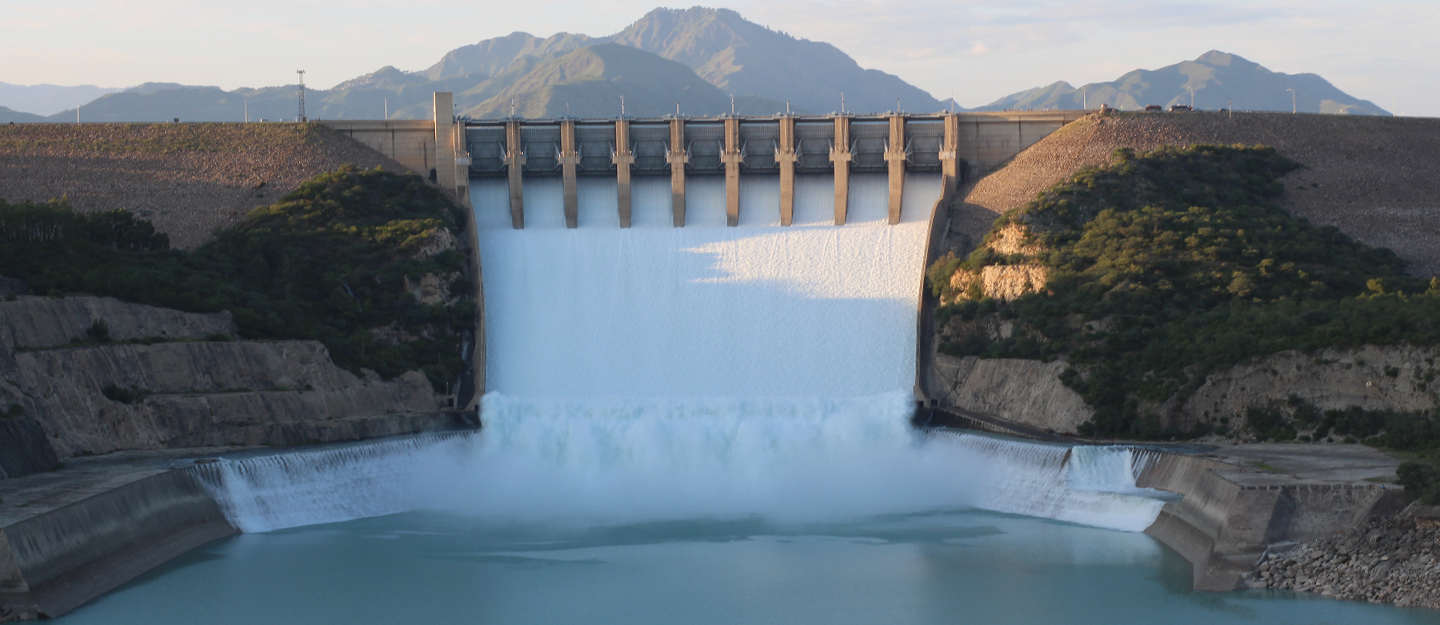
Pakistan-What the renowned American hydro expert David Lilienthal wrote in 1951 holds true even today: “No armies with bombs and shellfire could divest a land so thoroughly as Pakistan could be devastated by the simple expedient of India’s permanently shutting up the source of water that keeps the field and the people of Pakistan green.”
After the Uri attacks in India-held Kashmir, Prime Minister Modi said while pointing towards river maps: “Blood and water will not flow in one direction anymore.” He directed his team to use water as a weapon to deprive Pakistan of water from the Western rivers. In order to achieve this, India is according the highest priority to developing hydro projects on the Indus and Jhelum rivers.

Any hydro project coming to India’s Planning Commission is given top priority for implementation. India’s policy approach is increasing its utilisation of the waters of the Western rivers in accordance with what it says is its right under the Indus Water Treaty (IWT). Additionally, India is using its clout with international financing agencies to stop funding hydro projects in Azad Jammu and Kashmir (AJK) and Gilgit-Baltistan (GB).
Under pressure unfortunately, international financiers have abandoned lending in AJK and GB due to the disputed territorial status. Even the $14-billion Diamer-Bhasha multipurpose, high-value project failed to secure financing from international lending agencies. India has already successfully blocked 350MW Athmuqam on the Neelum River (AJK).

Pakistan has a hydropower potential of 60,000MW, but Wapda has developed only 15pc of it in 72 years
Several other projects on the Neelum River, adjacent to Athmuqam HPP, may also meet the same fate if the Pakistan government delays these hydropower projects in the name of surplus thermal capacity and not declaring them as “strategic” projects of national security importance by including them in Indicative Generation Energy Plan (IGECP) being drawn up by the Power Division.
Water rights between the two countries are governed under the IWT and in this regard Annexure-D, Paragraph 15 (iii) is important: “Where a plant is located on a tributary of the Jhelum on which Pakistan has any agricultural use or hydro-electric use, the water released below the plant may be delivered, if necessary, into another tributary but only to the extent that the then existing agricultural use or hydro-electric use by Pakistan on the former tributary would not be adversely affected.”
In simple terms, it means that water used for power generation at the downstream level would no longer be available for withdrawal at the upstream level. The international law of riparian water rights also protects the rights of lower riparian (Pakistan) through its covenant of prior appropriation; the state which first utilises the water acquires legal right of use.
Pakistan’s response has been a muddled affair. No specific national security policy or project imitative has been announced to secure our water rights. It has yet to officially announce that hydropower is renewable energy and will be receiving priority as is being accorded to alternate renewable energy (ARE) — solar and wind. Solar and wind must definitely be encouraged in view of their falling costs.
However, it must be remembered that solar and wind are “intermittent” and do not provide the reliability, voltage, frequency control and quick start capability that hydropower gives. Thus, these three technologies need to be developed in parallel as they complement each other, add value to the grid and provide much-needed energy security.
Pakistan has a hydropower potential of some 60,000MW of which only about 9,387MW has been developed by Wapda in 72 years due to bureaucratic hurdles. The private sector has been struggling for the past 10 years in developing some 5,000MW. If properly incentivised and planned, another 15,000MW can be developed by the private sector in the next 20 years.
International financiers have stopped lending in AJK and GB due to the disputed territorial status
The useful life of hydropower projects is 100-120 years, and at expiry of the 30-year concession term, a hydro plant is transferred free of cost to the government. The hydro plant continues to operate at nominal variable cost against thermal generation for which repeated capital expenditure will be required.
The low priority given to hydropower development in Pakistan is evident from the fact that only three IPP hydro projects, through sheer perseverance, have reached commercial operation. New Bong Project (84MW) got LOI in June 1995 and reached operation after 18 years; Patrind (147MW) got LOI in 2005 and completed in 14 years; Gulpur 102MW was issued LOI in 2005 and reached operation in 15 years. Karot (720MW) started its journey in 2007 and is expected to be completed by 2021. After 21 years of struggle, Suki Kinari Hydropower (870MW) got LOI in 2005 and is expected to be in operation by December 2022.
For the last many years, not a single hydro IPP has been given a go-ahead by the government in the strategic GB and AJK territory. It must be recorded that the two projects that were included to CPEC last year were started decades ago: Kohala Hydropower (1,124MW) got its LOI in 2009 and Azad Pattan (700MW) was issued LOI 2007.
Hydropower projects should be recognised as a “renewable” energy project and made part of the renewable energy targets set by the government. It should be recognised that hydropower projects address the intermittency and other technical deficiencies of solar and wind which, in the last IGCEP draft, were addressed by thousands of megawatts of open-cycle gas turbines running on imported fossil fuel.
To establish its equitable water rights, Pakistan must maximise beneficial use of the Western rivers, through fast-track construction of hydropower projects in AJK and GB by classifying them as projects of national-security importance by including them in the Indicative Generation Energy Plan as “strategic”. The government, without any further delay, needs to announce a clearly defined policy that includes measures to counter the aggressive Indian hydrological wars offensive.